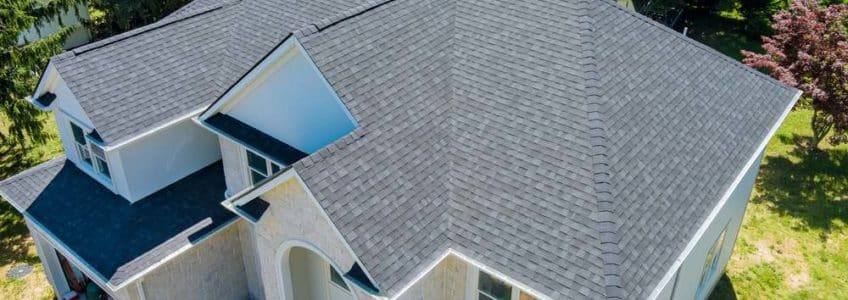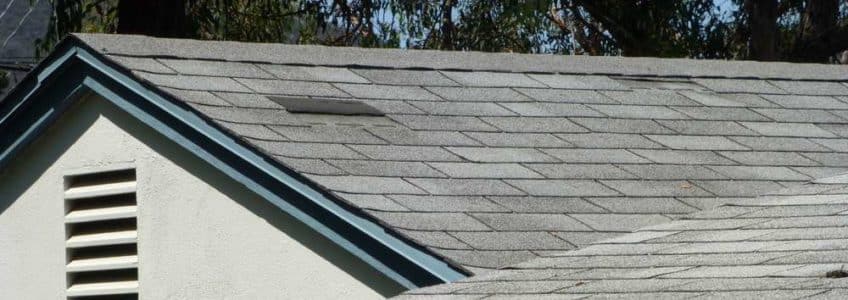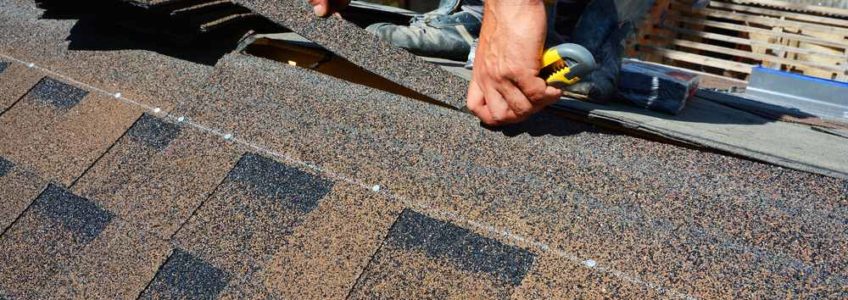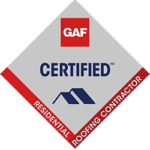How Long Does a Roof Last in Minnesota
Minnesota is among the most vibrant and beautiful places to live in the United States. But it’s also home to a varied climate and occasional severe weather that can cause havoc to roofs, siding, and other parts of your home’s exterior.
Between hail, rain and snow, and high winds, Minnesota roofs have to endure some harsh conditions. Today, we’re going to examine the question of how long does a roof last in Minnesota and share some helpful advice to help you improve your roof lifespan.
Typical Roof Lifespan in Minnesota
There’s a myriad of factors that will influence the answer to how long does a roof last in Minnesota. The material the roof is made from significantly impacts the lifespan, along with various environmental conditions.
Metal, tile, or slate roofs have the most extended lifespan of roofing materials, and they commonly last 50 years or more. Wooden shake roofs reliably last for around 30 years, while fiber cement and asphalt shingles have the shortest lifespan, approximately 25 and 20 years, respectively.
Severe weather and environmental conditions will decrease the lifespan of any roof. Of course, if you’ve been searching online for “how long does a roof last in Minnesota,” you’ve likely dealt with your fair share of extreme weather.
If a roof in a more temperate climate is designed to last for 25 years, you can expect that same roof to have a lifespan of 18 to 22 years in Minnesota.
What Causes Roof Damage in Minnesota?
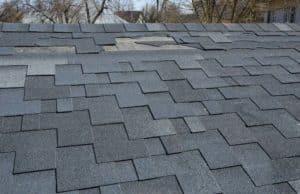
Living in Minnesota means your home has to withstand severe environmental conditions, which could adversely affect your roof lifespan. Here are the most significant contributing weather factors that can influence what answer you get to the question “how long does a roof last in Minnesota:”
- High winds: Strong gusts and wind storms can rip shingles from your roof, which invites more significant problems, such as leaks, to get through the missing shingles.
- Hail: Golf ball-sized hail can quickly cause damage to individual roof shingles.
- Freeze/thaw cycles: Cold winters and temperate summers can compromise your roofing material and shorten the roof’s lifespan.
Identifying Roof Damage
The best way to boost roof lifespan and ensure you get the best outcome to the query, “how long does a roof last in Minnesota?” is to occasionally inspect for evidence of damage, especially after the end of winter or a nasty storm. These are a few tell-tale signs of roof damage:
- Missing shingles
- Damaged shingles
- Roofing material in the gutters
- Stains from roof joists and decking
- Leaks
- Sunlight peeking through into the attic
When considering how long does a roof last in Minnesota, missing or damaged shingles are one of the most common culprits for a shorter lifespan in the state. High winds during severe storms can rip shingles from the roof, while large hail can damage individual shingles and lead to leaks.
With asphalt or cement shingle roofs, you might encounter roofing material in your gutters. If you see any debris, that’s a sign that your shingles are degrading and indicates a more significant problem.
If you notice staining on the roof in the shape of roof joists, your roof is likely reaching the end of its useful lifespan.
Leaks and sunlight peeking through in spots where it shouldn’t are typically the most extensive problems. These issues will lead to more significant leaks and won’t offer homeowners a favorable answer to the question, “how long does a roof last in Minnesota?”
How Often Should You Inspect Your Roof?
Roofing damage can happen at a moment’s notice, so Minnesota homeowners must be vigilant and monitor their roofs for signs of deterioration. If you don’t want to keep thinking about how long does a roof last in Minnesota, it’s a good idea to inspect your roof every six months.
As a rule of thumb, it’s best to look closely at your roof from the ground level. You should examine your gutters for indications that any roofing material has washed away.
You’ll want to perform a more thorough yearly assessment to ensure your roof is in top condition, so you’ll never be left wondering how long does a roof last in Minnesota.
Keep in mind that roofing is dangerous work, and you shouldn’t inspect the roof yourself unless you have experience working with roofing. You’ll need proper footwear and safety equipment, a quality ladder, and a spotter.
Catching roof damage early on can save you thousands of dollars in repair or replacement costs. If you don’t feel comfortable with the process, contact an experienced roofing contractor to assess the roof for you.
What Roofing Material Is Best for Minnesota Homes?
Even with an answer to “how long does a roof last in Minnesota,” homeowners may still be in the market for a roof replacement. If that’s the case, you’re likely looking for a roofing material that can deliver the most value and extended lifespan possible.
You’ll want to consider the pros and cons of all roofing materials to find the right match. For example, copper or metal roofs provide the longest lifespan but are also expensive and more challenging to maintain. Meanwhile, asphalt or cement roofs aren’t quite as durable, but they’re more affordable and easier to maintain.
The most important thing to remember as a Minnesota homeowner is to choose a trusted roofing contractor with the expertise needed to protect your family from harsh weather.
After all, the proper installation of underlayment, flashing, and roofing material is just as important as the material itself. It also goes a long way in determining the matter of how long a roof lasts in Minnesota.
Get Your Free Estimate Today With A to Z Construction
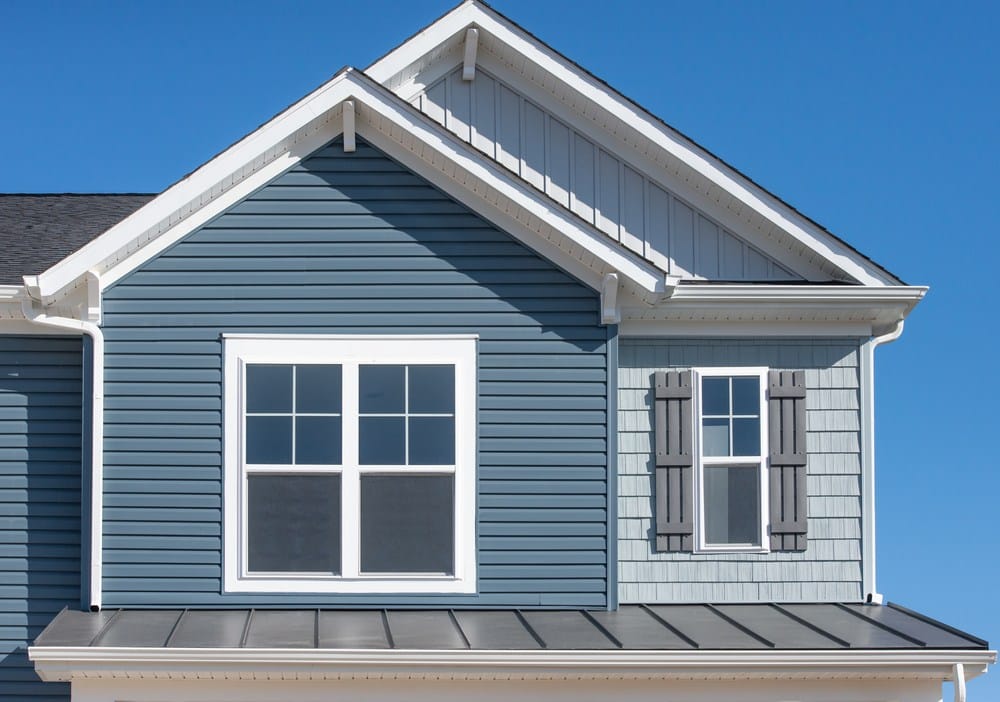
Minnesotans know too well how important it is to have a well-maintained, high-quality roof on their home. With that in mind, you need to know what signs of damage to look for and routinely inspect your roof to ensure it’s in good condition.
Now that you can answer the question of how long does a roof last in Minnesota, we encourage you to turn to us for all your roofing needs. Our seasoned professionals are on hand to give you trusted opinions if your roof is damaged or in disrepair. We’re ready to address whatever roofing issues your property might be experiencing. Contact A to Z Construction today to get your free roofing estimate.
Hail Roof Damage: Everything You Need to Know
Several factors influence roof hail damage. What size hail will damage a roof, how much hail damage will require you to replace a roof, and what hail damage looks like on a roof are essential questions for fixing and preventing roof hail damage. Here is everything you need to know about hail damage to a roof.
How Does Hail Damage Your Roof?
Hail damages your roof when it impacts the roof with a high enough intensity to cause dents, scratches, punctures, and loose or missing shingles. The roof hail damage will also vary depending on your roof’s material. However, never overlook roof hail damage, no matter what material your home has.
Asphalt shingle roofs have the longest lifespan but are middle-of-the-road when it comes to preventing hail damage to a roof. Shingles can be pitted, dented, scratched, cracked, and knocked loose. Asphalt shingles are the most common roofing material.
Clay shingles or tiles can shatter due to roof hail damage, while metal roofing may only dent thanks to hail damage to a roof. Wooden roofs can take the most roof hail damage but can take the least amount of damage from other weather conditions.
What Does Hail Damage Look Like on a Roof?
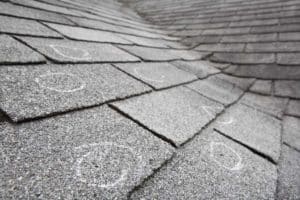
If you’ve never experienced a hail storm, you may ask, what does hail damage look like on a roof? Hail damage to a roof can look like “bruises” on shingles or can misalign shingles and tear them off. The bruises appear as cracks, fractures, dents, and missing chunks. They can be hard to spot but hail damage to a roof can lead to more significant problems if not solved.
So, what does hail damage look like on a roof? Typically, it looks like one of the following three things.
Cracks and Dents in Roof Hail Damage
Cracks from roof hail damage can look like thin slivers within your shingles and can change the shape of the remaining material. In severe hailstorms, your shingles can break entirely off, resulting in exposed fiberglass mats.
Dents typically come from larger hailstones and are less likely to occur in shingles than in other materials like sheeting, brick, or wood because shingles are more flexible. However, hail may have dented gutters, air vents, or other metal structures.
Exposed or Fractured Fiberglass Mats
If hail cracks the shingles enough to loosen them, the fiberglass mat underneath can become exposed. It’s easy to tell what an exposed mat looks like, but it can be harder to see a fractured one (especially if the shingle is still in place) from roof hail damage.
Exposed mats can lead to water accumulation under the shingles and are the perfect place for ice to form and pop your shingles off, causing roof hail damage. Fractured mats can have water seep through them and into your house, causing water damage to the wooden frame and ceilings.
Cosmetic Hail Damages to Roof
When it comes to cosmetic damage, what does hail damage look like on a roof? Hail damage to a roof mostly results in cosmetic damage that can lead to more significant issues if left untreated. For example, a dent or crack in a shingle won’t immediately be the end of your entire roof. How much hail damage you need to replace a roof can depend on the seriousness of the cosmetic damage, which can lead to permanent damage.
For example, a few cracks won’t ruin the entire roof within a day. However, if you never repair the cracked shingle, water can get into the roof and freeze, causing further cracks under and between the shingles.
If you notice damage on other parts of your roof, it’s a good idea to call us for a free inspection. This way, professionals can look for damage you may have missed when looking over your roof for hail damage.
What Size Hail Will Damage a Roof?
No two storms have the same-sized hailstones, and the different sizes can result in additional roof damage. But what size hail will damage a roof? Typically, hailstones range from the size of a pea to the size of a softball. What size hail will damage your roof? Anything larger than a grape will cause hail damage to a roof.
Smaller hailstones don’t typically have a high enough density to cause visible roof hail damage- though they may be the end of your flowerbeds. Hail larger than an inch can gain enough momentum through a strong wind to begin chipping away at bricks and shingles, causing roof hail damage.
When the wind picks up during a hailstorm, it doesn’t matter what size the hail is to damage your roof. Hailstones around two to four inches can impact your roof anywhere between 44 to 72 mph. Imagine a softball-sized hailstone with a higher density hitting your roof at 60 mph; this will cause significant hail damage to a roof.
So, what size hail will damage a roof? Typically, anything larger than an inch.
How Much Hail Damage To Replace a Roof?
How much hail damage to replace a roof? That depends on whether you want insurance to pay for it. Insurance companies offer different levels of coverage depending on where you live and the price of your deductible. Up here in Minnesota, it’s definitely part of your coverage. But how much damage is enough to qualify? How much hail damage to replace a roof?
In terms of hail damage to a roof, most insurance companies want to see seven to ten hail impact points that caused visual damage within a 10’ by 10’ square. However, if your roof has three to four punctures due to hail damage, you’re most likely covered for at least a partial repair.
Some insurance companies won’t cover cosmetic damages, which is why that free inspection is crucial. Having a professional company state that there’s physical damage to your roof is the first step to replacing it.
A professional appraisal can prove the damage is from hail, not from other situations like UV rays, branches, animals, or improper installation. So, how much hail damage to replace a roof? Typically about seven to ten points of impact per every ten square feet.
Have Hail Damage? Get Your Free Estimate Today
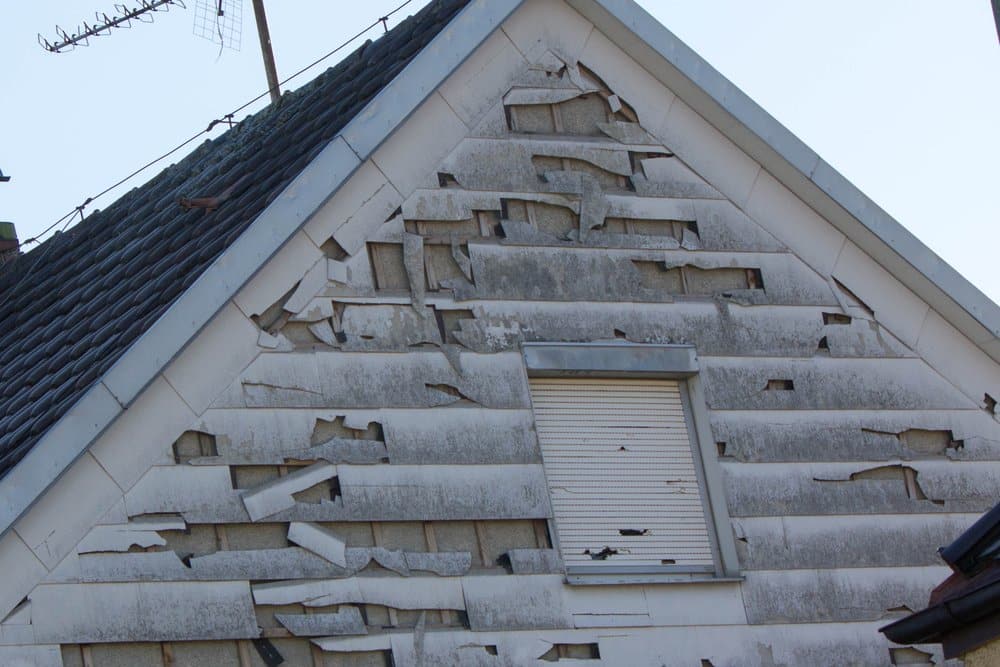
Your roof is built to protect your house, but sometimes mother nature can be a bit too much and cause hail damage to a roof. When looking for hail damage to your roof, check for dents, cracks, and granule loss on your shingles. Checking the gutters and air vents for hail damage to a roof is good for diagnosing the hail’s size.
Roof hail damage can be both cosmetic and extreme, meaning you’ll need someone to analyze the full depth of damage to your roof. Contact A to Z Construction today, and we’ll come out and ensure your roof is in excellent condition. If it’s not, we’ll be happy to stay and finish the job.
How Often Should a Roof Be Replaced?
Some homeowners might dread the idea of a roof replacement since it can be time-consuming and expensive. The truth is that every once in a while, it needs replacing to increase your home’s longevity. We have seen our share of various roof types, so let’s break down the different roofing types and how often to replace roofs.
Life of a Roof: An Overview
How often to replace roofs depends on how long the building has been around and what damage it has sustained. Most roofs last between 20 to 30 years. However, if a high-quality team installed your roof with proper ventilation, it can last up to 50 years.
How long your roof initially lasts will depend on the roofing materials themselves and if any major storms or trees have damaged the roof. Remember that different roof materials will react differently to heat and water, so you should find the one that works best for the area’s weather patterns and your housing needs.
When to Replace a Roof?
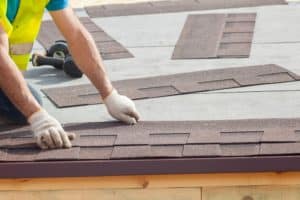
When professionals advise on how often to replace roofs, they always consider the type of roofing material. Today, there are five different types of common roofing materials that you will pick from.
1. Slate Roofing
Slate roofing is usually the most robust roofing material on the market. It can last anywhere from 75 to 100 years without significant damage. Slate is a strong material, but it does require a lengthy installation process since each tile goes onto the roof one at a time.
If you’re considering a slate roof replacement, make sure your home can handle the weight since slate is one of the heavier roofing materials. Slate roofing is also expensive, on top of possibly needing to refit your home. If you think it’ll cost more to replace your original roof, stick with a slate roof for the next 75 years at minimum.
2. Cedar Shake Roof
Unlike slate roofs, cedar shake roofs come primarily from wooden materials, which still last a long time but are not practically immortal, like slate roofs.
They also take less time to lay down than slate roofs since cedar shingles come in two-foot sections. You can choose the taper-sawn or hand-split looks, making your roof look more refined or more rugged.
When well-made, a cedar shake roof should last up to 30 years when well-made. Provided there are no major disasters and your roofing team uses top-notch materials, you might even get 50 years out of it.
That said, you probably won’t want a cedar shake roof if you live in an area with high humidity or extreme dryness. Either condition will cause the cedar tiles to age faster.
3. Composite Roof
If you want a roof that looks like either slate or cedar shake but don’t want to shell out too much money, a composite roof might be just right.
They’re a strong roofing option since they can withstand heavy impacts, like hail or heavy rain. Plus, they come from recycled materials, like plastic and rubber, allowing hail to bounce off them.
With that in mind, you can expect a great composite roof to last between 30 to 50 years.
4. Standing Seam Metal Roof
People consider metal roofs for many reasons, including that standing seam metal roofs look great and work in any climate. They come from seamed metal plates that contract with heat and cold, so they don’t age as fast as other roofing choices.
You can expect a typical standing seam metal roof to last for roughly 30 years if you care for it regularly.
5. Asphalt Roof
While it sounds like it should be the strongest roofing choice, asphalt has the shortest lifespan of roof replacements. They have great design, though, since they can either lay flat or have a dimensional look.
Asphalt comes in three types: luxury, architectural, and 3-tab. Each of these materials will last roughly 30 years.
How Do You Know If You Should Replace Your Roof?
When deciding how often to replace roofing materials, you will have some crucial questions. It’s very easy to call up your local roofing company to get an inspection for a potential new roof. In the meantime, you can look out for some general signs you need a new roof.
We also have a few roof maintenance tips to put off another roof replacement as long as possible.
Regularly Look for Internal and External Damage
Make a schedule and pick a day to check for internal and external damage on your roof. It’s an excellent idea to check for damage after a big storm.
You might even get a professional inspection every couple of years or after an especially harsh storm, just to be sure.
Keep Track of Your Roof Shingles’ Age
If you’ve had a roof replacement before, keep track of how long it’s been on your house. Know the typical lifetime of your roofing material and keep that year in mind for later.
Understand Your Roof’s Maintenance Needs
Besides checking for general damage, it’s a good idea to go through the following checklist for roof damage to determine how often to replace roofing and if it’s time for yours to receive that treatment.
Check Your Shingles
Take time to check your shingles to see if anything is out of place, cracked, or broken. This also means checking out your chimney for anything out of place. If you see any cracked or missing mortar, or if your chimney is leaning to one side, it might be good to have an inspection for foundational problems.
Check For Tree Hazards
If there are any low-hanging branches close to your roof, trim them or cut them entirely away. Doing so can also prevent leaves from getting into your gutters.
Clean Out Your Gutters
If leaves or debris congest your gutters, they can become heavy and drag on your roof, so keep them clear with mesh guards and regular cleaning.
Wash Off Your Roof
Certain roofing types can gather algae, so wash that away before it becomes a more significant problem. A mixture of water and bleach should do the trick.
Call a Professional
As always, when in doubt, contact a roofing professional. Our talented team can help you decide when it’s the best time to replace your roof.
Is It Time to Replace Your Roof?
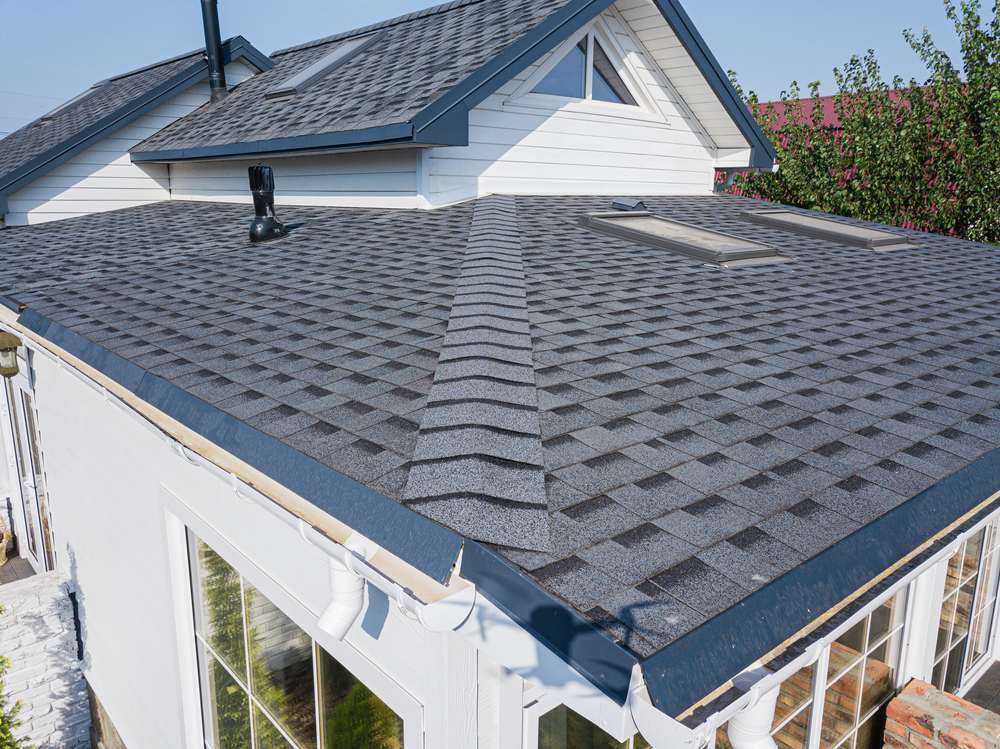
How often to replace a roof depends on your roofing materials, their age, and whether there is any external damage. Luckily, when to replace roofing materials can be a long time off with regular check-ups and professional inspections.
A to Z Construction covers all your roofing needs. If you need an inspection or a replacement, we can take care of you and your roof with no problem. Contact us today for a free roofing estimate for your replacement project.



